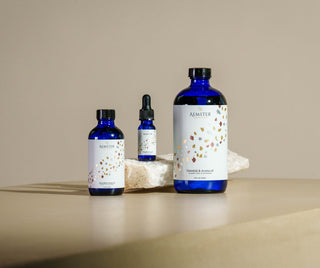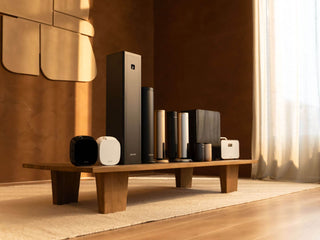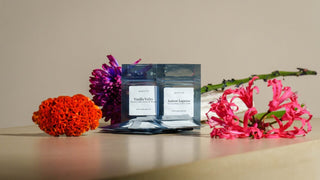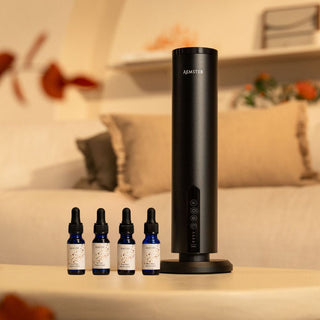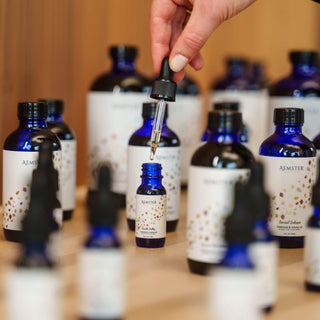Cold air nebulizers are gaining popularity because they provide a luxurious, professional fragrance experience without heat or water. To make the most of this technology, it is essential to understand why this type of diffuser is superior, and also how to select safe oils and apply them responsibly to create a long-lasting, enjoyable home atmosphere.
This guide provides detailed explanations for each aspect, helping you make informed choices and achieve the best possible results.
Why cold air nebulizers are the best choice
1. Pure, authentic scent
Cold air nebulizers use air pressure to atomize oils, ensuring that the fragrance molecules remain stable. Heat-based diffusers can alter the structure of delicate scent compounds, leading to a less true or muted aroma. By using a cold air system, you preserve the integrity of each note in the fragrance, from top notes to base notes, so that your space smells exactly as intended. This results in a more nuanced, richer experience where subtleties like floral hints or woody undertones can be fully appreciated.
2. Fine mist dispersion
These devices turn essential oils into microscopic particles that float through the air, allowing the scent to disperse evenly across the room. This prevents the formation of scent hotspots near the diffuser, which can happen with simple spray methods or heat-based devices. Fine mist dispersion ensures that everyone in the room experiences a balanced aroma, creating a consistent and immersive olfactory environment. In larger spaces, this even distribution allows for a luxurious scent profile without overwhelming any single area.
3. Efficient and economical
Cold air nebulizers are highly efficient, using only 0.03–0.06 ml of oil per hour (in low setting diffusing). Because the fragrance is delivered in a concentrated form, there is no need to dilute the oils with water, which is common in ultrasonic diffusers. This means you use significantly less oil to achieve the desired scent intensity, making it cost-effective over time. Additionally, because the diffusion is controlled and precise, the fragrance lasts longer and can be tailored to specific times of day or moods.
4. Hygienic and low maintenance
Without water reservoirs, cold air nebulizers eliminate the risk of bacterial growth, mold, and limescale accumulation, which are common problems with ultrasonic or heat-based diffusers. This not only ensures the air remains clean and healthy but also extends the lifespan of your device. Regular maintenance is simple: a quick wipe or mild cleaning solution is sufficient, making it easy for busy households to maintain a safe and fresh environment.

Key ingredients to look for or avoid in scent oils
Ingredients to look for
-
High-quality oils: These scent oils combine the finest natural aromas with carefully crafted man-made molecules. The result is a rich, nuanced scent experience, from bright, uplifting top notes to deep, harmonious base notes. This thoughtful blend brings the essence of nature to you, without impacting the natural sources to enjoy the beauty of nature’s aromas in a way that is both sustainable and responsible
-
IFRA-Certified fragrance oils: Oils that meet IFRA standards have been rigorously tested for safety and suitability in indoor air environments, reducing the risk of respiratory irritation or other health concerns.
-
Stable aroma molecules: Oils with stable molecular structures maintain their fragrance when nebulized, ensuring consistency over time and preventing the breakdown of delicate notes.
-
Low viscosity: Thin oils diffuse smoothly and evenly through the device, preventing clogging and ensuring a continuous, high-quality scent experience.
Ingredients to avoid
-
Carrier oils (e.g., Jojoba, almond, coconut): While excellent for skin applications, these oils are too viscous for nebulizers, causing blockages and uneven diffusion.
-
Phthalates and parabens: These chemical additives are unnecessary in home fragrance oils and may pose health risks with prolonged inhalation.
-
Unspecified fragrance blends: Oils labeled merely as “fragrance” or “perfume” without detailed composition may contain allergens or synthetic chemicals that could irritate sensitive individuals.
-
Strong or toxic oils (e.g., Wintergreen, Wormwood, Pennyroyal): These oils may be safe in tiny amounts for external use but can be harmful when inhaled over long periods, particularly for children, pets, or individuals with respiratory sensitivities.
How to choose the right scent oil and diffuser
1. Match diffuser to room size
The size and power of your diffuser should align with the dimensions of your space. A weak diffuser in a large room will fail to distribute the scent evenly, while a too-powerful unit may overpower small rooms and waste oil. Consider airflow, ceiling height, and furniture placement when selecting your device to ensure the fragrance reaches every corner without being overwhelming.
2. Select oils based on mood or purpose
Different scents have psychological and emotional effects. Citrus notes can energize and refresh, lavender promotes relaxation and sleep, and woody or spicy aromas can create warmth and comfort. Choosing the right fragrance for your intended ambiance allows you to create a space that not only smells pleasant but also supports your lifestyle, whether it’s a calm reading nook, a lively living area, or a welcoming entryway.
3. Consider viscosity
Thin, low-viscosity oils atomize more easily and produce a smooth, consistent mist. Thicker oils may sputter or leave residue, leading to maintenance issues and inconsistent scent distribution. Selecting oils specifically designed for nebulizers ensures your device functions optimally and delivers the full fragrance profile.
4. Start with low intensity
Professional-grade oils are highly concentrated. Starting with a low diffusion rate allows you to gauge the strength of the fragrance and adjust to your preference without causing overpowering scents or olfactory fatigue. This careful approach also prevents respiratory discomfort in sensitive individuals.

Application tips for busy people
1. Use timers
Setting automated timers for your diffuser allows for consistent scenting throughout the day without requiring constant monitoring. You can schedule periods for work, relaxation, or entertaining, ensuring the home always smells inviting without excess oil usage.
2. Start with short cycles (e.g., 2 seconds on, 90 seconds off)
Intermittent diffusion provides a balanced scent environment and prevents scent fatigue, where the aroma becomes less perceptible over time. Short cycles also preserve oil and extend the life of both your fragrance and device.
3. Place diffuser strategically
Proper placement maximizes efficiency and scent coverage. Avoid enclosed or obstructed areas that can trap the fragrance, and position the device where natural airflow distributes the scent evenly throughout the room, creating a comfortable and immersive olfactory experience.
4. Start with one signature scent
Consistently using one fragrance allows your home to develop a unique, recognizable aroma profile. Weekly switching between scents can confuse the senses, reduce the impact of the fragrance, and make it harder for guests or household members to identify and enjoy the scent fully.
5. Keep backup oils
Having a spare bottle of your chosen fragrance ensures that your diffusion schedule is never interrupted. This continuity allows you to maintain a consistent atmosphere in your home, supporting routines and reinforcing the desired ambiance.

Additional safety tips
Ventilation
Even with cold air nebulizers, regular ventilation helps maintain air quality and prevents excessive buildup of fragrance molecules. Fresh air ensures a healthy balance between scent and comfort.
Keep oils out of reach of children and pets
Essential oils are highly concentrated and can be harmful if ingested or applied to skin. Proper storage keeps children and pets safe and maintains the integrity of your oils.
Clean diffuser regularly
Residue from oils can accumulate over time, affecting performance and fragrance quality. Regular cleaning ensures that your diffuser continues to operate efficiently and delivers a pure, consistent scent.
Test for sensitivities
If anyone in your household has asthma, allergies, or other sensitivities, start with low doses and monitor reactions. Adjust diffusion rates or oil selection as needed to maintain a safe and comfortable environment.
Conclusion
Cold air nebulizers offer a clean, powerful, and safe method for home fragrance. By carefully selecting oils, understanding ingredients, managing viscosity, and using proper diffuser settings, you can create a professional-quality scent experience that enhances your home, supports your lifestyle, and ensures the safety and comfort of all household members.


